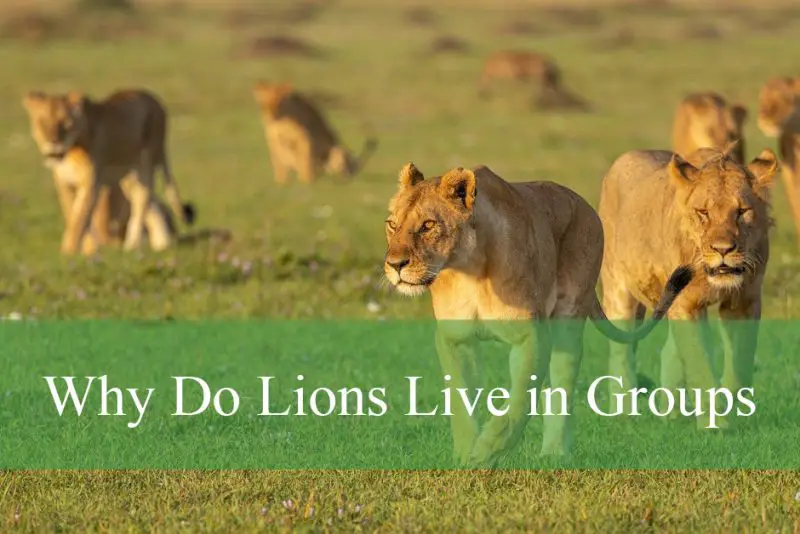Lions are often hailed as the “king of the jungle,” yet unlike most big cats that lead solitary lives, lions are unique in their social behavior. They live in groups known as prides, which sets them apart in the animal kingdom. This group living is one of the most fascinating aspects of lion biology and ecology.
But why exactly do lions live in groups? What secrets does their social life hold? Understanding the reasons behind this behavior reveals much about their survival strategies, communication skills, and evolutionary success in the wild.
The Social Structure of Lion Prides

A pride of lions typically consists of several related females, their offspring, and a coalition of males. The size of a pride can vary widely, usually ranging from three to over a dozen individuals. The females in the pride are usually related—mothers, daughters, sisters—and they form the core of the group. Males, on the other hand, may come and go, often forming coalitions of brothers or allies who work together to control the pride.
This social structure is highly organized. Female lions usually remain in the pride for life, maintaining strong social bonds with each other, while males may be ousted or leave to challenge other males for territory. The pride’s structure allows lions to cooperate in hunting, territory defense, and raising cubs, providing them with advantages that solitary living could not offer.
Benefits of Living in Groups
Living in groups offers lions numerous advantages that increase their chances of survival. The most obvious benefit is cooperative hunting. Hunting large prey like zebras, wildebeest, or buffalo is dangerous and difficult for a lone predator. Lions working as a team can use strategic approaches, such as surrounding or driving prey toward hidden members, which greatly increases their hunting success rate.
Additionally, group living enhances protection. A pride collectively defends its territory from rival lions and other predators. Male lions play a significant role here, patrolling borders and intimidating or fighting off intruders. This cooperative defense reduces the risk for individuals and secures critical resources such as food and water.
The social environment also promotes the survival of cubs. Lionesses cooperate to nurse and protect their young, increasing cub survival rates. This shared responsibility eases the burden on individual mothers and strengthens the pride as a whole.
The Central Role of Female Lions
Females are the backbone of the pride. They usually do the majority of the hunting and caring for the young. Their lifelong relationships foster cooperation, which is crucial during hunts and when raising cubs. Female lions hunt in coordinated groups, using stealth and teamwork to isolate and bring down prey much larger than themselves.
Besides hunting, female lions are involved in the defense of their cubs. When threatened, lionesses work together to shield the young from predators, including rival males who may try to kill cubs to bring females back into estrus.
The cohesion among females ensures the pride’s stability and continuity. Their cooperation reduces internal conflicts and maintains a functional social system critical for the pride’s survival.
Male Lions: Protectors and Breeders
Male lions, while less involved in hunting, are vital for the pride’s defense and reproductive success. They guard the pride’s territory against rival males, which is essential for maintaining control over females and their offspring.
Male coalitions often work together to fend off intruders and patrol large territories. Their imposing size and roar serve as powerful deterrents. However, these males also face fierce competition. When a new male coalition takes over a pride, they may kill existing cubs to bring females into estrus, a behavior known as infanticide.
Despite these challenges, male lions’ protection and breeding roles are essential for the pride’s continuation. Their presence ensures genetic diversity and territorial stability.
Communication and Cooperation Within the Pride
Lions communicate through a variety of vocalizations, body language, and scent markings. Their iconic roar can be heard from miles away, signaling presence and territorial boundaries. Roaring is not only a form of intimidation but also a way to strengthen social bonds within the pride.
Beyond vocalizations, lions show social bonding through grooming, rubbing heads, and licking each other. These behaviors reinforce alliances and reduce tension among pride members.
Effective communication is especially crucial during hunts. Coordinated attacks require timing and understanding between members, showcasing a level of social intelligence and cooperation rarely seen in solitary predators.
Environmental Influences on Group Living
The environment plays a significant role in shaping the social behavior of lions. In areas where prey is abundant and open savannas dominate, larger prides can thrive due to the benefits of group hunting and defense.
Conversely, in regions where resources are scarce or habitats are fragmented, lions may form smaller groups or even live solitarily. This flexibility demonstrates how lions adapt their social structures to optimize survival under varying ecological conditions.
Seasonal changes, competition with other predators, and human encroachment also influence pride size and dynamics. Lions’ social systems are thus dynamic and responsive to their environment.
Evolutionary Reasons Behind Group Living
From an evolutionary standpoint, living in groups has provided lions with significant advantages. Cooperative hunting allows them to tackle larger prey, which provides more food and energy to sustain the pride. Group defense reduces mortality from rivals and other predators.
Social living also facilitates the transmission of knowledge and behaviors across generations, increasing the species’ overall fitness. Young lions learn hunting techniques and social norms within the pride, improving their chances of survival.
This social lifestyle is a product of natural selection, where group living enhanced reproductive success and longevity, making lions one of the few truly social big cats.
Challenges of Living in Groups
Group living is not without its drawbacks. Competition for food can become intense, especially when prey is scarce. Sharing meals means individual lions may receive less, leading to potential conflicts.
Social tensions can arise within the pride, particularly among males competing for dominance or breeding rights. Infanticide by incoming males creates additional stress and disrupts pride stability.
Moreover, disease transmission can be higher in dense social groups, posing health risks. Managing these challenges requires complex social behaviors and negotiation within the pride, reflecting the delicate balance between cooperation and competition.
FAQs About Why Do Lions Live in Groups
Why do lions prefer to live in groups called prides?
Lions live in prides because group living improves hunting success, provides better protection from rivals, and increases cub survival through shared care.
How does living in groups help lions hunt more effectively?
By cooperating, lions can coordinate attacks to take down larger prey that would be difficult to catch alone, increasing their food intake.
What roles do male lions have within the group?
Male lions primarily defend the pride’s territory from rival males and predators, ensuring the safety of females and cubs, and maintaining breeding rights.
Are all lions in a group related?
Typically, female lions within a pride are related, such as mothers, daughters, and sisters. Males may be unrelated but often form coalitions to control the pride.
Do lions always live in groups?
While most lions live in prides, some, especially young males or lions in scarce environments, may live solitary lives or in smaller coalitions.
Conclusion: The Fascinating Social Life of Lions
Lions’ choice to live in groups is a remarkable adaptation that sets them apart in the animal kingdom. Their social lives involve intricate cooperation, communication, and shared responsibilities that boost survival and reproductive success.
Understanding why lions live in prides uncovers the secrets behind their strength and resilience. It shows how nature shapes behavior to optimize survival in a challenging world. The pride is not just a group of big cats—it is a dynamic social unit that thrives on collaboration, balance, and mutual support.
The secrets of lions’ social life remind us that even the mightiest creatures depend on connection and teamwork to rule their domain.






